A new monument at L.A.’s county hospital marks a dark history of coerced sterilization
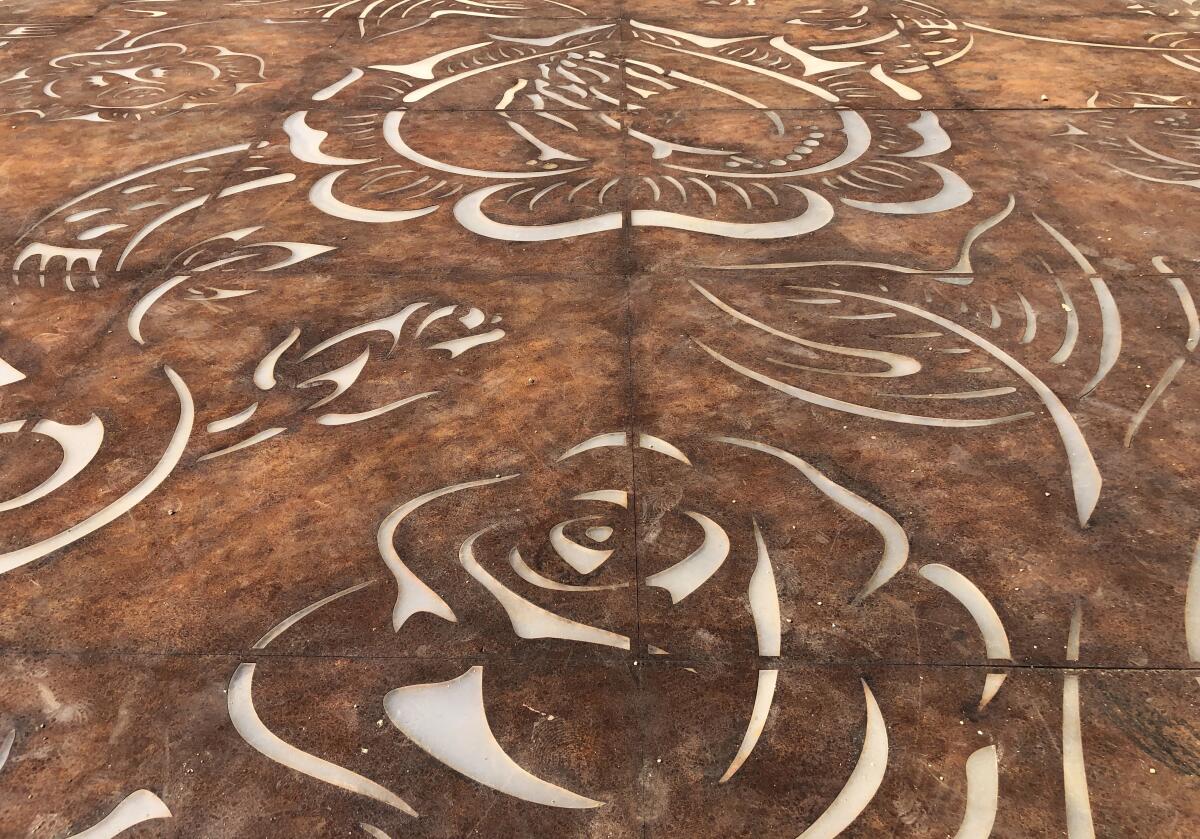
- Share via
All the musical references in Beyoncé’s “Renaissance.” Plus, all the remixes ranked. (Yes to Honey Dijon!) I’m Carolina A. Miranda, arts and urban design columnist at the Los Angeles Times, and this is now a house music newsletter — with some essential arts attached:
A monument to bodily autonomy
Tucked between L.A. County-USC Medical Center’s newer building and the older hospital, a 19-story Art Deco structure from 1933, you’ll find a pleasant outdoor space studded with benches and trees.
It’s one of those urban spaces that comes as a bit of surprise — you don’t expect to find a nice plaza garden at the heart of this behemoth hospital complex. Marengo Street, which serves the hospital, is one of those roaring arteries jammed with buses — all of it shouting distance from the 5 Freeway (that’s if you can hear yourself shout). But the garden, except for the dull whine of building ventilation systems, is quiet. (The landscape architecture is by Rios, just in case you’re wondering.)
At the heart of this garden, there is now a new monument that is not only poignant but also timely. “Sobrevivir,” by L.A. artist Phung Huynh, marks the coerced sterilizations that once took place at the hospital in the 1960s and ’70s — mostly of Mexican women from working-class backgrounds. It also pays tribute the 10 people who filed a class-action lawsuit against L.A. County doctors, the state and the federal government for sterilizing them without adequate consent. The case was at the heart of the 2015 documentary “No Más Bebés,” directed by Renee Tajima-Peña. (In 2018, the Los Angeles County Board of Supervisors issued a formal apology for the sterilizations.)
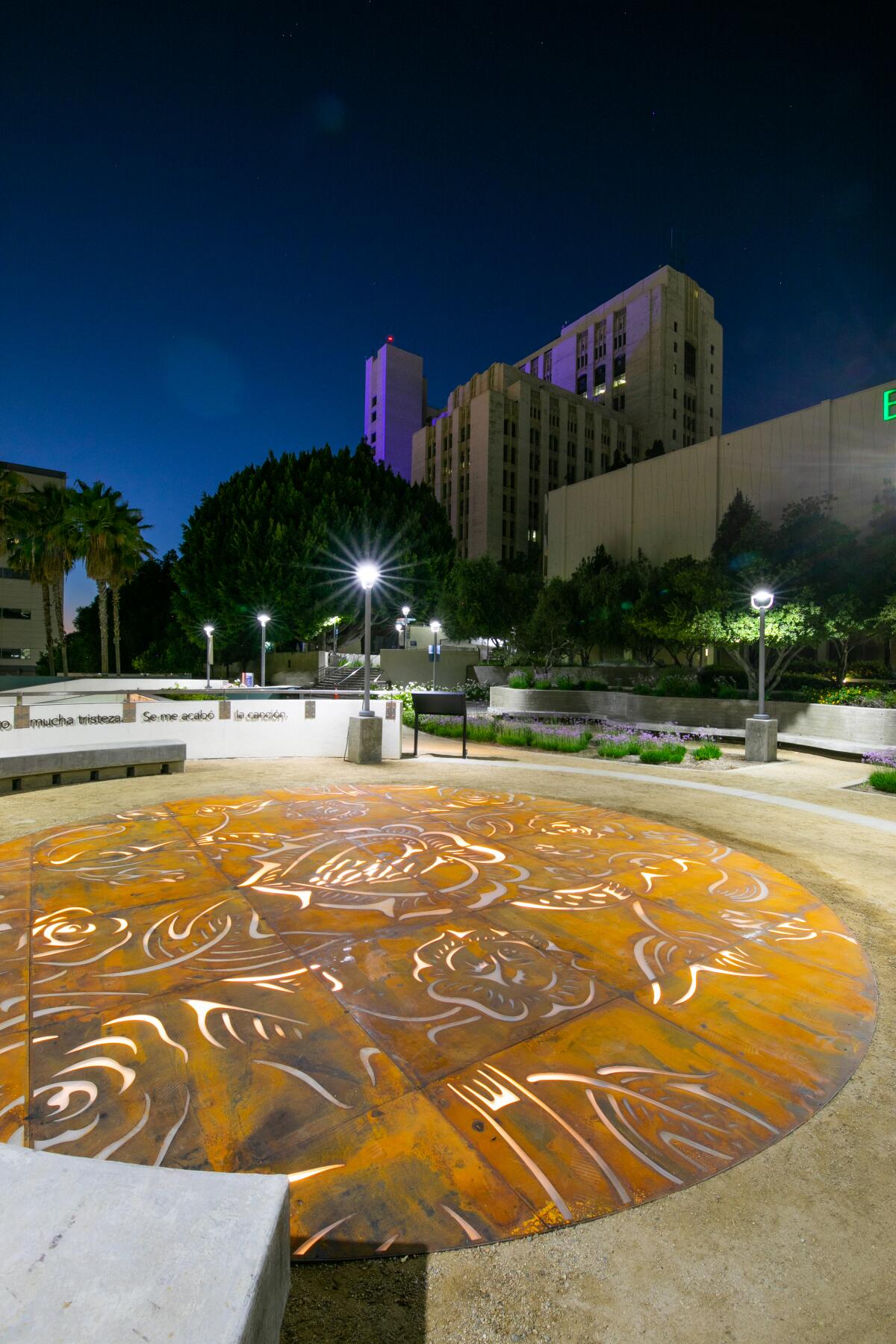
The work consists of a slender disc of corten steel laid flat on the ground that bears the outlines of roses and a pair of praying hands. At night, it is illuminated from below. A pair of low benches offer a space for contemplation, and a low, curved wall features texts inspired by the women’s experiences: “If you speak English, they treat you one way,” reads one inscription. “If you don’t speak English, they treat you another way.”
“Yo, por dentro, siento much tristeza,” reads another. “Se me acabó la canción.” This translates to: “I feel so much sadness inside. I have lost the ability to sing.”
Make the most of L.A.
Get our guide to events and happenings in the SoCal arts scene. In your inbox once a week.
You may occasionally receive promotional content from the Los Angeles Times.
Huynh was inspired by the look of hand-tooled leather in designing the monument’s surface. “Leather was so symbolic of skin, of transforming suffering and scarring,” she told KCET’s Carren Jao after the monument was unveiled last month. “The beautiful patterns and details of flora and flowers — I think flowers are very symbolic of women and fertility and also like an offering of apologies to the mothers.”
Her monument, whose title means “survival” in Spanish, lands at a moment in which we mull other limits to women’s bodily autonomy — namely, the overturning of Roe vs. Wade by the U.S. Supreme Court. (The class-action lawsuit cited Roe vs. Wade as precedent.)
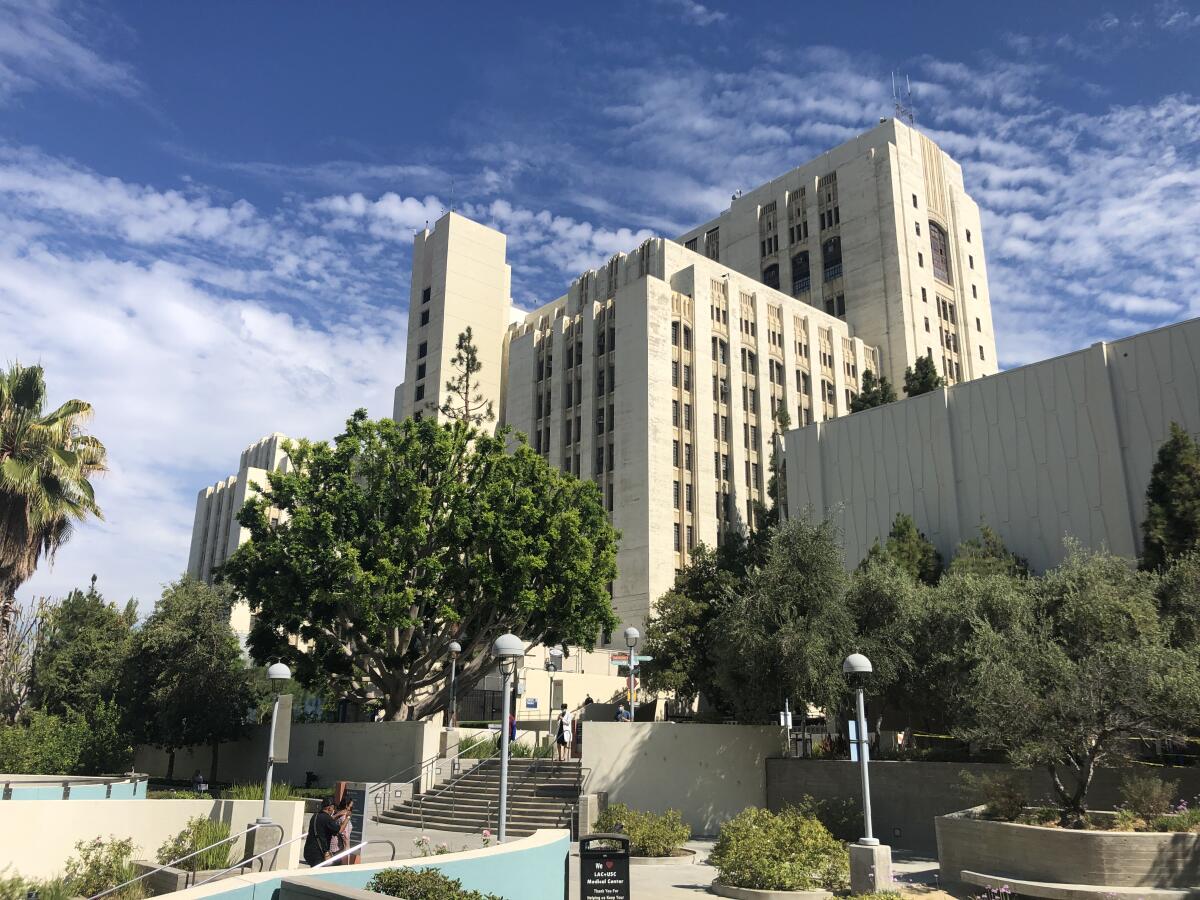
It’s one of many changes that is coming to this historic medical complex. Last week, the Board of Supervisors approved a motion to map out plans for turning the mostly vacant Art Deco structure (whose architecture had grown outdated for medical purposes) into a site for housing. It would be part of an ongoing development plan that could supply a combination of market-rate and affordable housing, as well services such as childcare and a grocery store.
This is a promising development for a building that is strategically located near public transit as well as two pleasant parks (Hazard and Lincoln). A grocery would certainly be welcome for the surrounding community. One cannot survive on “creative space” alone.
Classical notes
Times classical music critic Mark Swed sat in on rehearsals of the Encuentros Orchestra, a youth orchestra founded by L.A. Phil musical director Gustavo Dudamel and actress María Valverde (who happens to be Dudamel’s wife). The orchestra, which has players ages 18 to 26 from 22 countries, had its Hollywood Bowl debut on Tuesday.
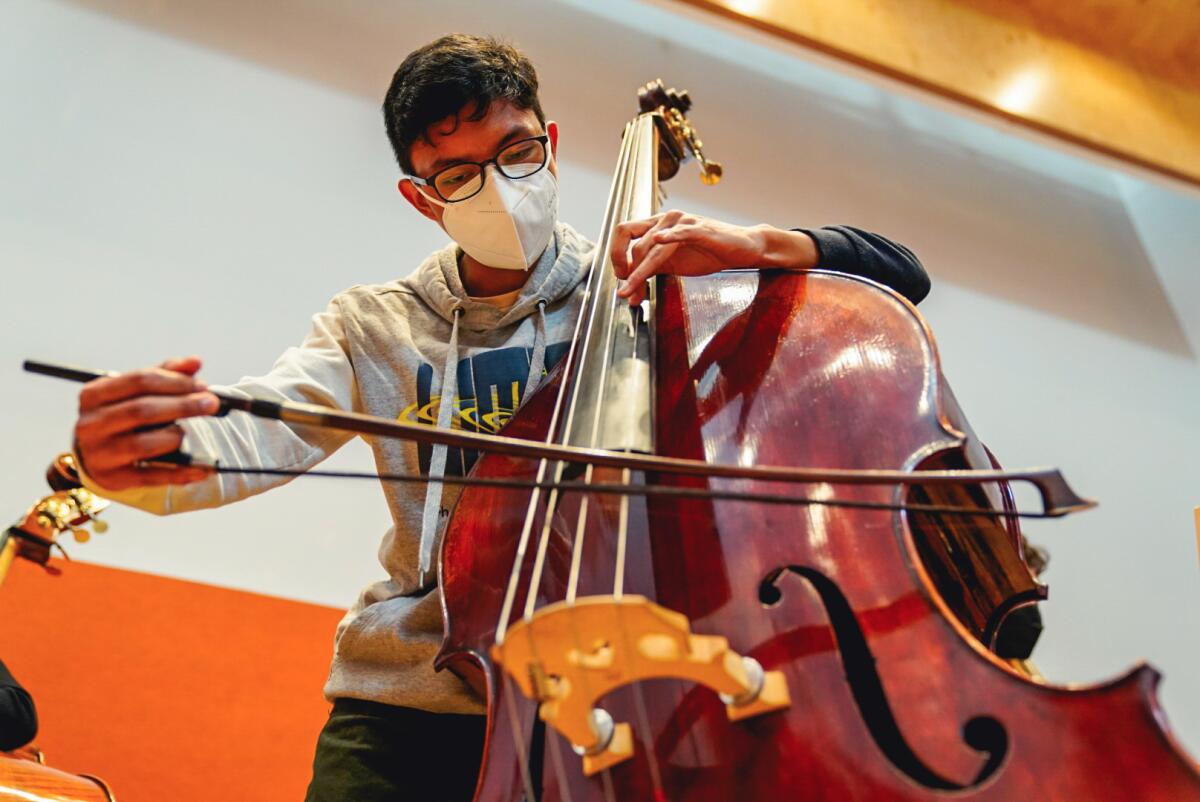
Art and design
“At the Table,” an exhibition at the Armory Center for the Arts in Pasadena, takes food at its focal point — examining the ways in which the pandemic forced people to reassess priorities and make do. The show features art about and even made with food, reports contributor Leigh-Ann Jackson, who speaks with four participating artists in the show: Yeu “Q” Nguyen, Jackie Amézquita, Yrneh Gabon and Francisco Palomares. Some works, writes Jackson, “take a hard look at the ways citizens and natural resources have been exploited for the sake of food production. Others highlight artist-led community efforts to provide food and essentials to those in need across L.A.”
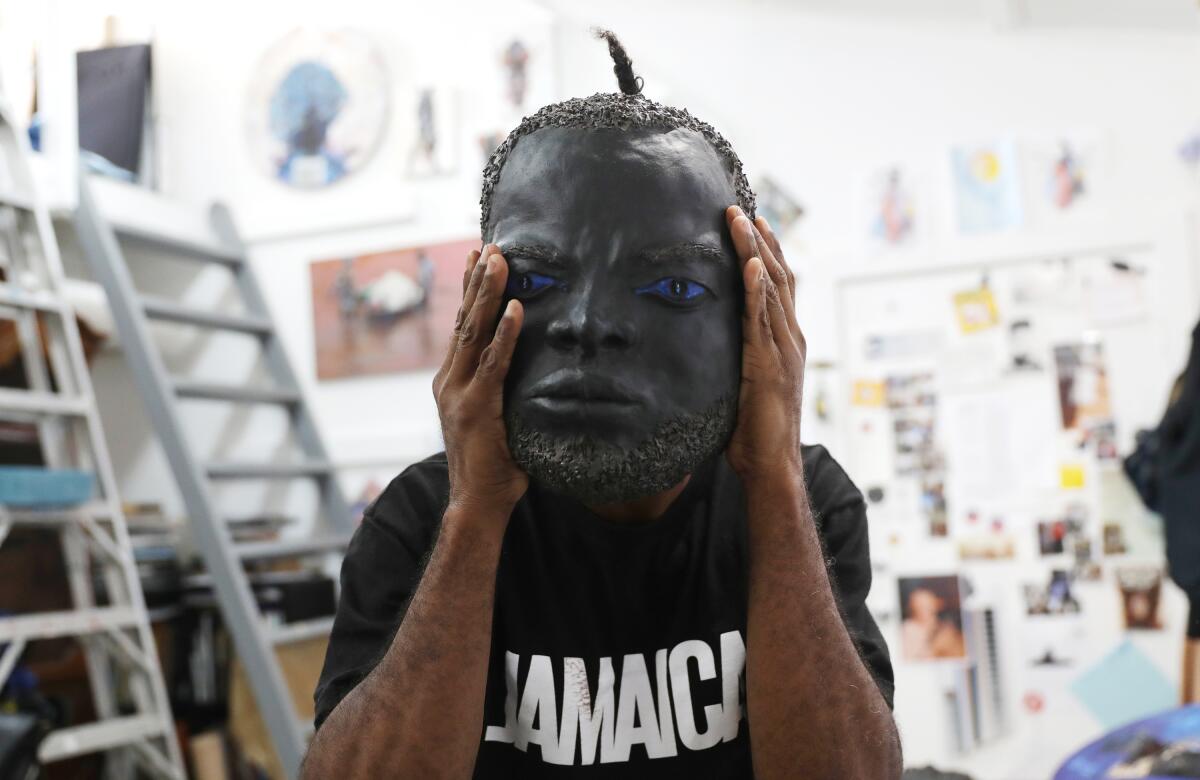
For more than three decades, artist Robbie Conal has papered L.A. streets with political broadsides that decry corruption, hypocrisy, warmongering and more. I was able to tag along on his latest mission: putting up a new poster titled “Supreme Injustices” in the wake of the U.S. Supreme Court’s decision to overturn Roe vs. Wade. In this Q&A, we talk about the artists who inspired him (Leon Golub!), how the internet has expanded his reach and why he’s intrigued by the grotesque. “These people are grotesque,” he tells me of the political figures he has rendered. “The corrugation of their flesh is a metaphor for the corruption of their souls.”
Enjoying this newsletter? Consider subscribing to the Los Angeles Times
Your support helps us deliver the news that matters most. Become a subscriber.
I’ve also been spending my time lurking around the 6th Street Viaduct. Since it opened, the bridge has made headlines for the antics that have taken place on its deck: burnouts, drag racing and accidents. The narrative around the bridge has, as of late, fed into ideas of urban chaos. But I have spent more than a week hanging out at the bridge at different times of day and have largely encountered an elegant commuting artery that has been embraced as a plaza in a part of a city that lacks parks and public space.
My Times colleague Rachel Uranga, who covers transportation and mobility for The Times, reflects on the many complex things this new piece of public infrastructure has come to represent.
Related: Ken Karagozian has photographed many of the workers who built the bridge.
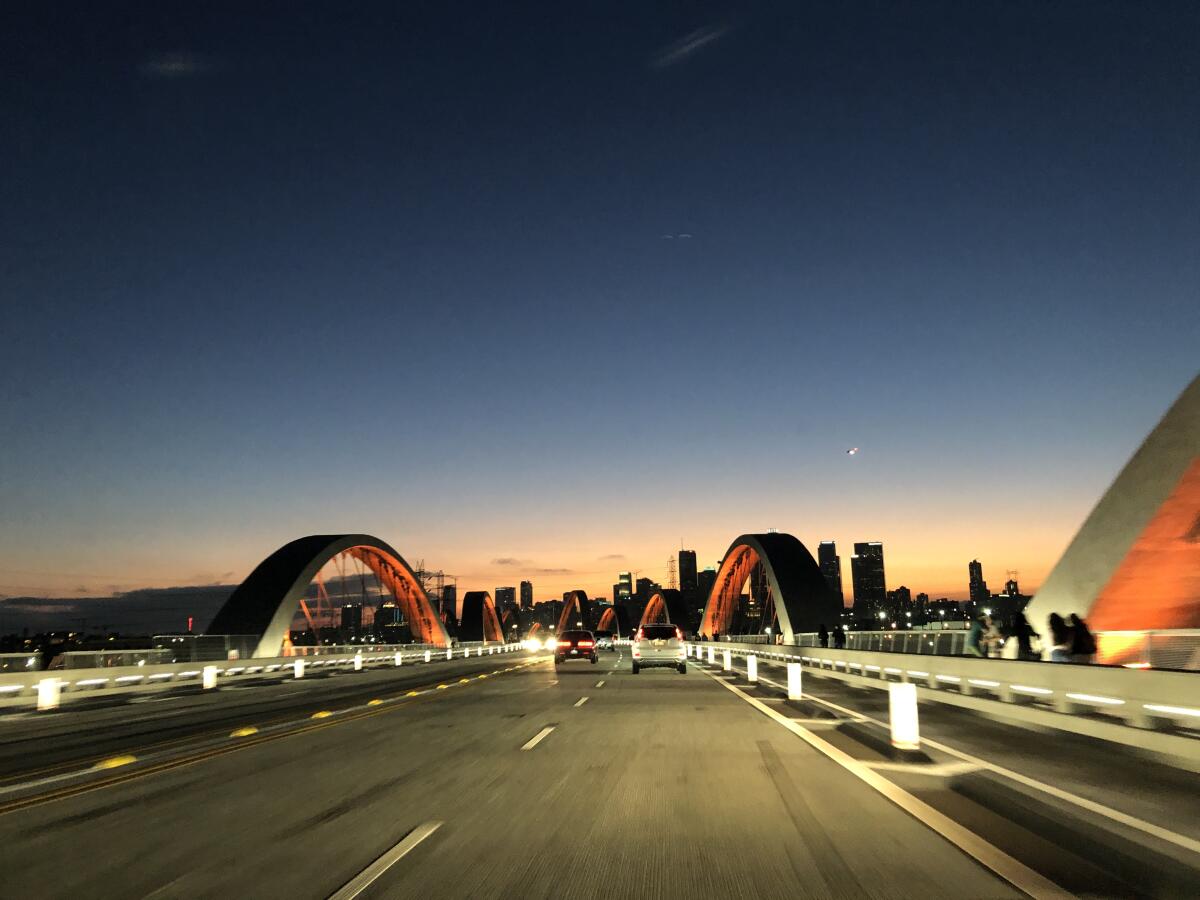
My colleague Jessica Gelt visited the new Natural History Museum exhibition “House of the Dragon: The Targaryen Dynasty,” and she is not impressed. “I hope winter is coming to freeze out the relentless churn of these types of pop-up exhibits,” she writes, “which use the legitimacy of a museum or gallery space to ride a pop culture hit, or beloved artistic figure, for dubious purposes.”
On and off the stage
L.A. has a new theater geared at improv actors of color: It’s called the Ledge, and it was founded by Shaun Landry, an alum of Chicago’s Second City. On the board is her husband, Hans Summers, who also comes from the improv world. “For the kids that come through, the object of taking a class at the Ledge is — yes, we’ll put you onstage — but the object is to leave so that you can create your own theater and you can create your own voice and you can become your own leader,” Landry tells The Times’ Jevon Phillips.
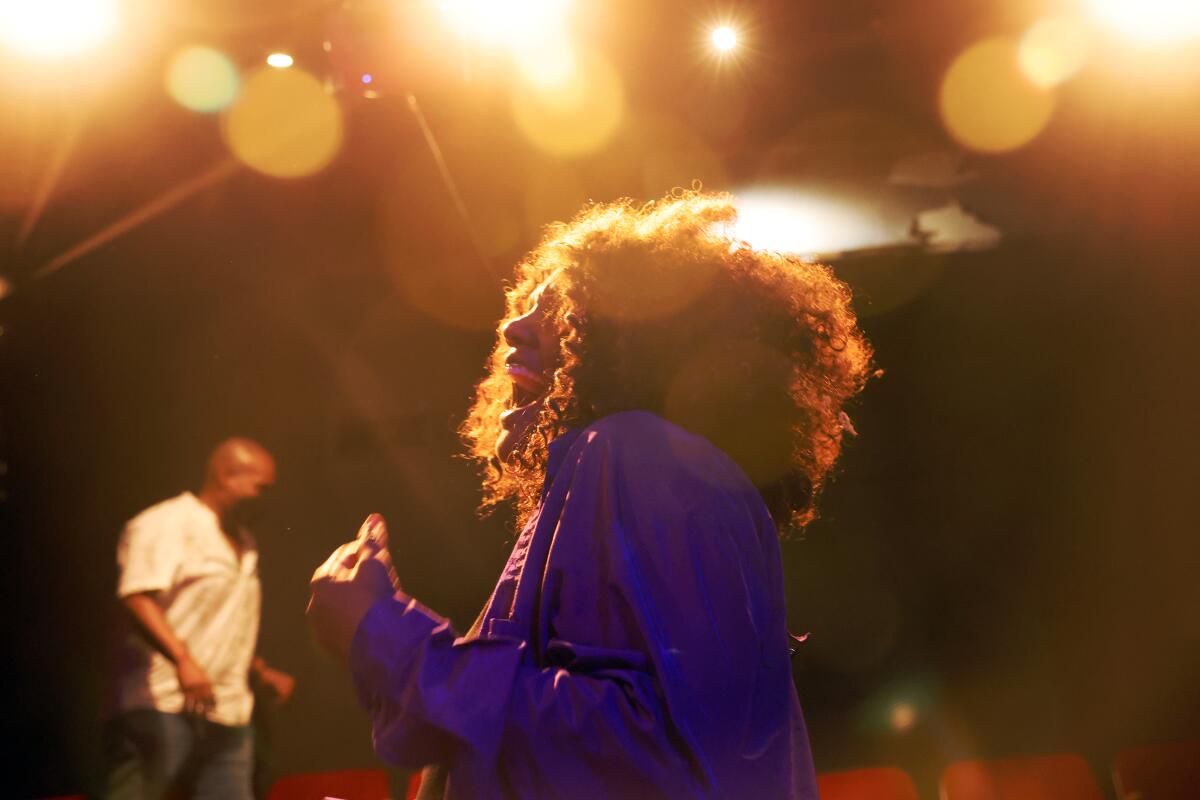
Essential happenings
My colleague Matt Cooper has got your weekend planned, with six best bets for L.A. — featuring free classical music concerts by the Pacific Symphony in Orange County and boleros courtesy of La Marisoul at the Ford.
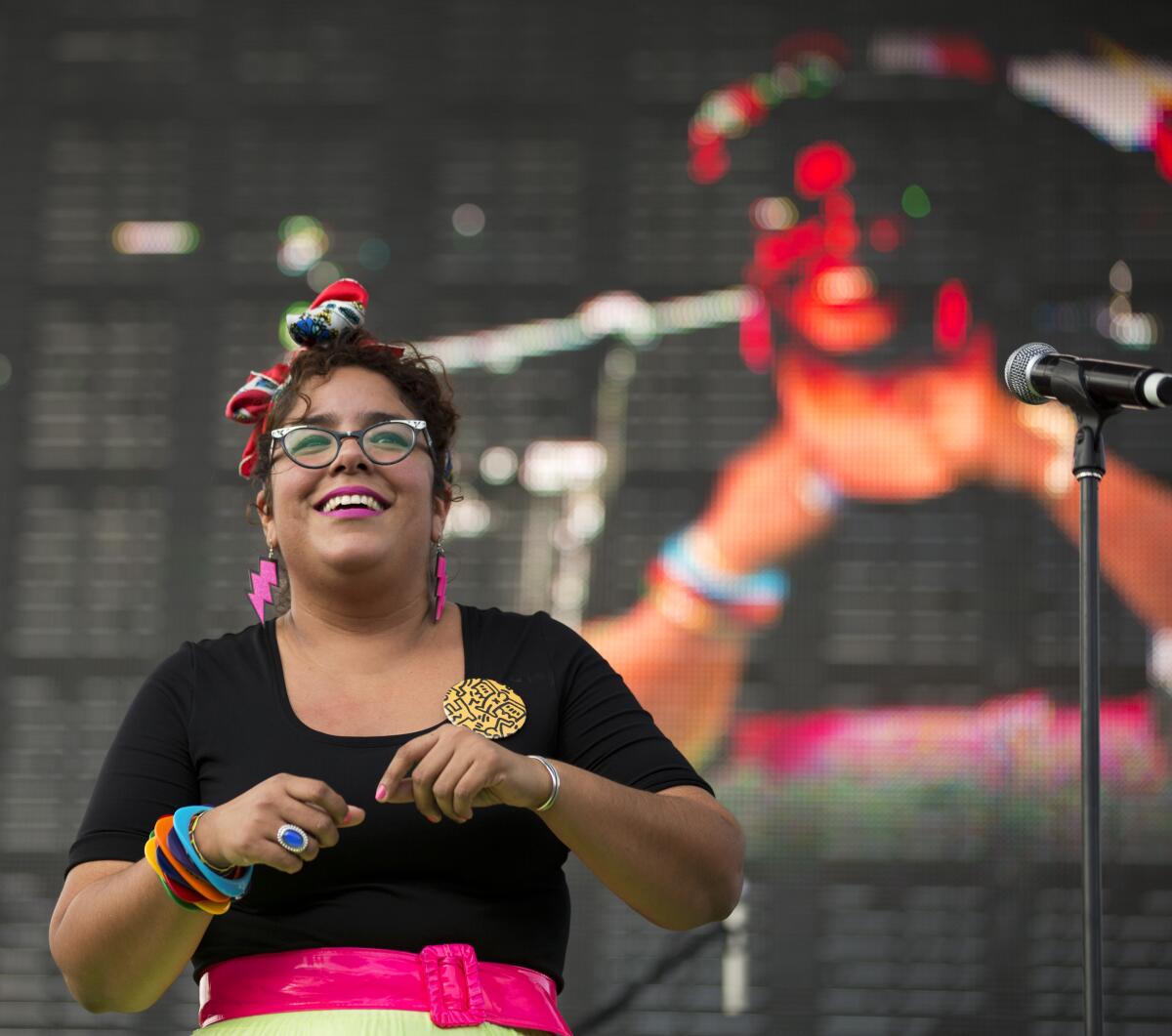
Plus, Cooper also rounds up all the great new museum shows for August. These include a show of paintings, drawings, prints and sculpture by Cy Twombly at the Getty that articulates the artist’s fascination with ancient Greece and Rome and an installation exploring decades of Black cinematic production at the Academy Museum.
Moves
LACMA’s 2022 Art + Film Gala will honor light and space artist Helen Pashgian and filmmaker Park Chan-wook (he of the enthralling 2016 thriller “The Handmaiden”).
Tricia Murdoch has been named development director and Marisa Solórzano-Hamilton has been named programs director at the Museum of Ventura County.
Passages
Carole Caroompas, a performer and painter whose work “pulled ravenously from pop culture and literature,” has died at 76. Contributor Catherine Wagley describes an artist whose “carefully planned paintings riffed on movies, music, literature and current events. They were tapestry-like in their detail but cutting, parodying gender norms and poking at art history — like the time she reimagined Gustave Courbet’s renowned ‘The Origin of the World,’ depicting her own prone female nude as giving birth to a fully uniformed football player.”
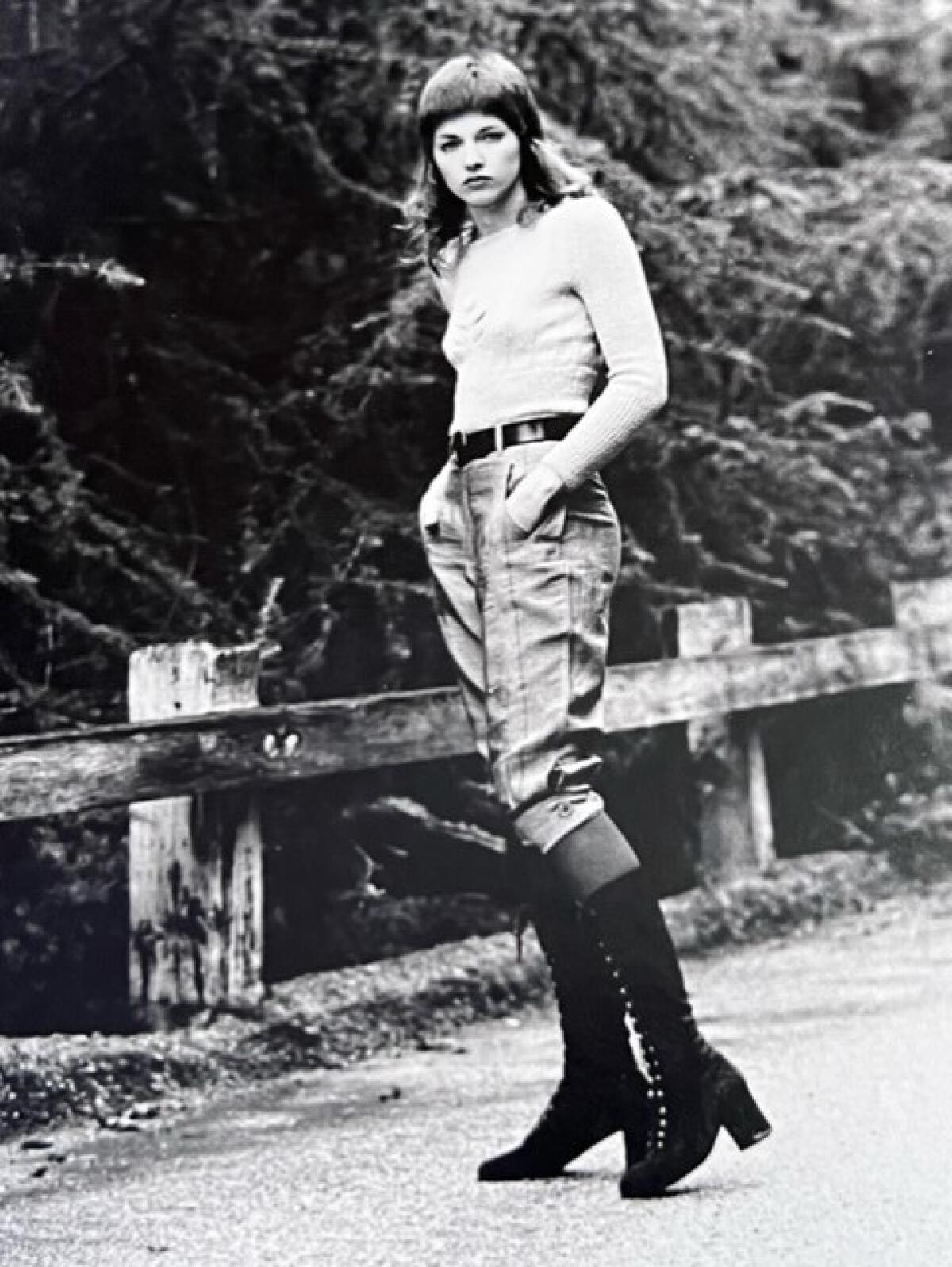
Art collector Lily Safra, known for supporting cultural organizations around the world, including London’s Tate museum and the Whitney in New York — and who pledged 10 million euros to restore the Notre Dame Cathedral after it burned — has died at age 87.
In other news
— Can we class action art collectors? A BBC Radio 4 documentary examines the gender pay gap among artists: A blind test shows that simply having a woman sign a work lowers its perceived value.
— Artist Lorna Simpson rendered WNBA star Brittney Griner for the cover of Time. Sadly, this week, Griner was sentenced to nine years in prison by a Russian court after a politically charged trial.
— This Leonora Carrington show at Mixografia looks wild.
— Takashi Murakami’s smiling flowers can now be found on Uno card decks.
— A video game modification of Duke Nukem allows players to blow up MVRDV’s Marble Arch Mound. (Background, in case you don’t remember the Mound. LOLOLOL.)
— An urban environment “governed by the principles of marketing, the aesthetics of high-tech homogeneity, and the interests of venture capital, and imbued with the sterile, cheerful infantilization of startup branding.” Anna Wiener has a good essay on visions of the future in San Francisco.
— “All the walkable charm of a new airport.” Slate’s Henry Grabar has a look at Mohammed bin Salman’s imagined future city.
— On the U.S.-Mexico border, the most surveilled place on Earth. Some incredible reporting in this story by Gaby del Valle.
— Xochitl Gonzalez on how the sound of gentrification is silence.
And last but not least ...
CPAC just out art worlded the art world.
The biggest entertainment stories
Get our big stories about Hollywood, film, television, music, arts, culture and more right in your inbox as soon as they publish.
You may occasionally receive promotional content from the Los Angeles Times.




